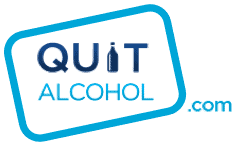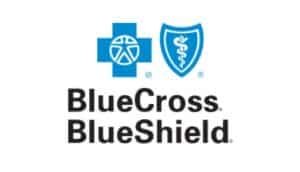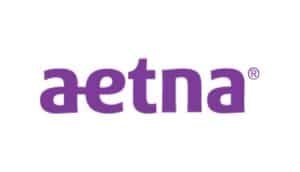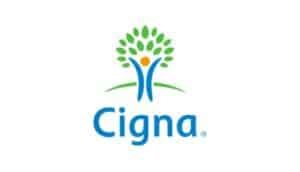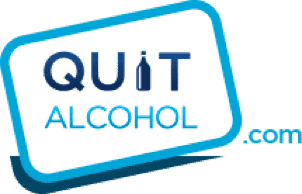Only one out of ten addicts in America will ever receive treatment. The most common reason for this is because a lot of addicts simply do not want to be treated, or they aren’t ready. That seems obvious, right? The second most common reason addicts fail to receive treatment is high cost. This includes not having enough money, not having health insurance, or both.
As for most of us, when it comes to spending, we must make decisions based on what we can and cannot afford. While unfortunate, this is also true when it comes to seeking treatment for drug and/or alcohol addiction. The decision to get treatment is one of the most important decisions someone can make, so receiving the actual help should be simplified. Why stress over this positively life-altering transition?
It’s common for people to be unsure of the costs of addiction treatment, let alone the amount they should expect to spend. This lack of knowledge results in fear that it just might cost too much, and prevents many from continuing to seek any type of treatment. There is a wide range when it comes to the cost of treatment centers. We always recommend contacting multiple treatment facilities and getting accurate information about the different options, costs, and levels of care provided.
Finding the proper type of treatment is the most important, but not the only factor that needs to be considered. We must also consider what our bank accounts allow us to afford. Luckily there are options when it comes to quality care and treatment.
Types of Treatments and What They Offer
Private Treatment
When thinking about seeking addiction treatment, most people first think of private treatment facilities. These are privately owned facilities which provide a home away from home, where patients can focus completely on recovery. A full staff is ready around the clock to attend to any needs, from detox to maintaining sobriety and everything in between.
Treatment at a private facility ensures the highest level of care and support.
Do your homework if choosing private treatment. The first and most important step is deciding which facility to enter into. As mentioned, you should communicate with several rehabs, similar to when someone applies to colleges. During this process, ask all the questions you have. The reps from each facility will likely have questions for you as well. Some rehabs might even run diagnostic tests in order to show you the long-term plan.
Also, note that almost all types of treatment are offered as either inpatient or outpatient programs. An inpatient program consists of you living temporarily at the facility, whereas outpatient programs allow you to check in and out for sessions.
Private treatment will first include a detoxification, ridding your body of the abused substance(s). More often than not, withdrawal symptoms will follow, and those will also be cared for during private treatment. Next will very likely be medication-assisted treatment, or MAT, which is using medicines such as methadone to combat opioid addiction, or benzodiazepines to combat alcohol addiction.
All the while, and for the remainder of your stay, there will be actual rehabilitation. You are taught life skills that help you cope with your recovery and maintain sobriety. You attend both group and solo discussions, where you can speak freely and listen intently. Most facilities offer healthy alternatives to drugs, such as sports, nature trails, group activities, etc. This process is usually referred to as cognitive-behavioral therapy.
While private treatment is considered a highly effective recovery option, it is important to note that the cost of such treatment can be significant. Private treatment not only requires a time commitment, but also greater financial commitment than other types of treatment. Depending on whether you choose an inpatient or outpatient treatment program, and for how long, (usually 30 days, 60 days or 90 days), costs can add up rather quickly.
Health insurance helps dramatically, and if purchased from the Healthcare Marketplace established as a part of Obamacare, it will completely cover addiction treatment. If affordable, and especially if you meet one or more of the following criteria, then seeking private addiction treatment is the right option for you:
- Long history of drug abuse
- Failed attempts at treatment
- Lack of support network
- Diagnosis of psychiatric disorders
Non-Profit Treatment
Non-profit treatment facilities are available across the country, and are very affordable treatment options. In fact, most states offer both inpatient and outpatient addiction treatment facilities that are completely tax-supported and charge no fees. There are short-term detox centers, long-term residential treatment facilities, and even individual outpatient counseling at local clinics.
Regardless of your financial situation, non-profit treatment centers make it possible for you and/or your loved ones to get the help needed. The following is a list of items to consider and actions to take when trying to determine if you qualify for such programs:
- Contact your local social services office and ask for advice. They are there to help. Your local office will be able to provide you with the necessary resources and options available to you, based on your individual circumstances.
- It is important to note that in some cases there will be a waiting list for these facilities, as they are utilized by many individuals seeking treatment. If the wait is too long you may want to consider other options. Time is of the essence.
- Financial requirements for these programs can vary. You many need to provide financial information to prove that you qualify.
- Some type of assessment will likely be performed to determine if you actually need to enter into a treatment program.
- Contacting a local rehab to see what they can suggest about getting state funding may also be a helpful option.
Once you have determined whether or not you qualify for non-profit treatment, it’s important to understand what you may expect at these facilities. Free treatment DOES NOT mean inferior treatment. These facilities exist to serve humankind, and tend to be run by highly dedicated professionals. Some even rival private treatment facilities!
Like we said, in some states there will be a waiting list for non-profit drug and alcohol rehab. This is probably the biggest drawback with free treatment. Another drawback is the fact that due to there not being as many options as with private treatment, some patients may enter into programs not necessarily most suited to their needs.
That being said, there are thousands of non-profit treatment centers that provide services. Guidestar is an invaluable resource that provides one of the most complete sources of information related to charities and other nonprofit organizations out there. They have an entire category designed to aid in finding non-profit addiction treatment.
If you find yourself among the many that make too much money to qualify for non-profit programs but cannot afford private treatment, options exist, primarily in the form of government-funded treatment.
Government-Funded Treatment
Government-funded drug and alcohol treatment centers provide excellent care and are a smart option for those who do not qualify for assistance but also are unable to afford private treatment. Government-funded facilities usually offer full treatment programs, sometimes even long-term.
There are many benefits to entering into government-funded treatment:
- Services are either free or are based on your income. Even if you pay, the price is much lower than with private facilities. Most government-funded rehabs offer payment plans, and most will work with anyone who needs help. Just as with non-profit rehabs, those that are government-funded do not seek profit.
- Government-funded treatment centers only use qualified professionals, all working toward helping you live a sober life. Like with other types of treatment, you will gain life skills to help you achieve and maintain sobriety, you will undergo cognitive behavioral therapy, and you will have access to MAT.
- Because they are indeed government-funded, these facilities are closely monitored, and are shut down if unsuccessful. Each facility’s spending is watched and assessed.
Government-funded treatment centers are a great resource for those in need of treatment but cannot otherwise afford private treatment. However, there may be some aspects of these facilities that present a challenge to your individual needs. It is important to remain informed about what each facility does and does not offer. The Substance Abuse and Mental Health Services Administration has a web feature that connects people with government-funded treatment centers in their zip code.
Additional Resources
You matter and your treatment matters. Stay informed. Educate yourself and pick the treatment facility that works best for you based both on your individual needs and financial situation.
Conclusion
You have already made the most important decision for your future: you have decided to seek treatment. Just because the shiniest most expensive option might not be available to you doesn’t mean you can’t obtain valuable, lifelong treatment from other resources. When taking into consideration our financial situations, the best option we have is finding any and all resources available to us to get the help we need. There is help out there – help that accommodates all financial needs – and help that is invaluable to the recovery of those seeking treatment.
Yes, private treatment offers perhaps the most intensive care, and is likely to have the most resources at hand. Still, the main idea is fighting and winning against addiction. Each and every legitimate treatment facility out there is specifically designed to win that fight. You’re already in the ring… you’re reading about treatment types… the fight is about to begin. Do the research, find the right facility for you and your means, and get to it. Today is the first day of the rest of your life.
